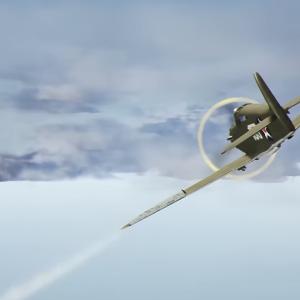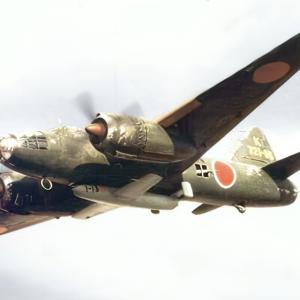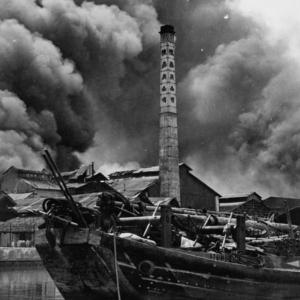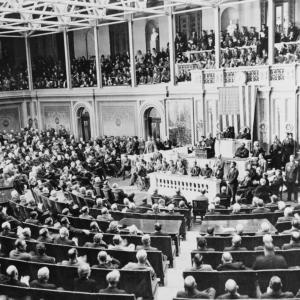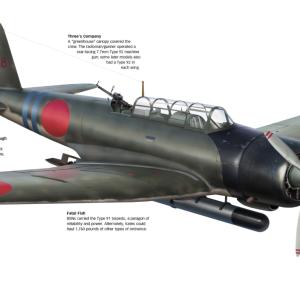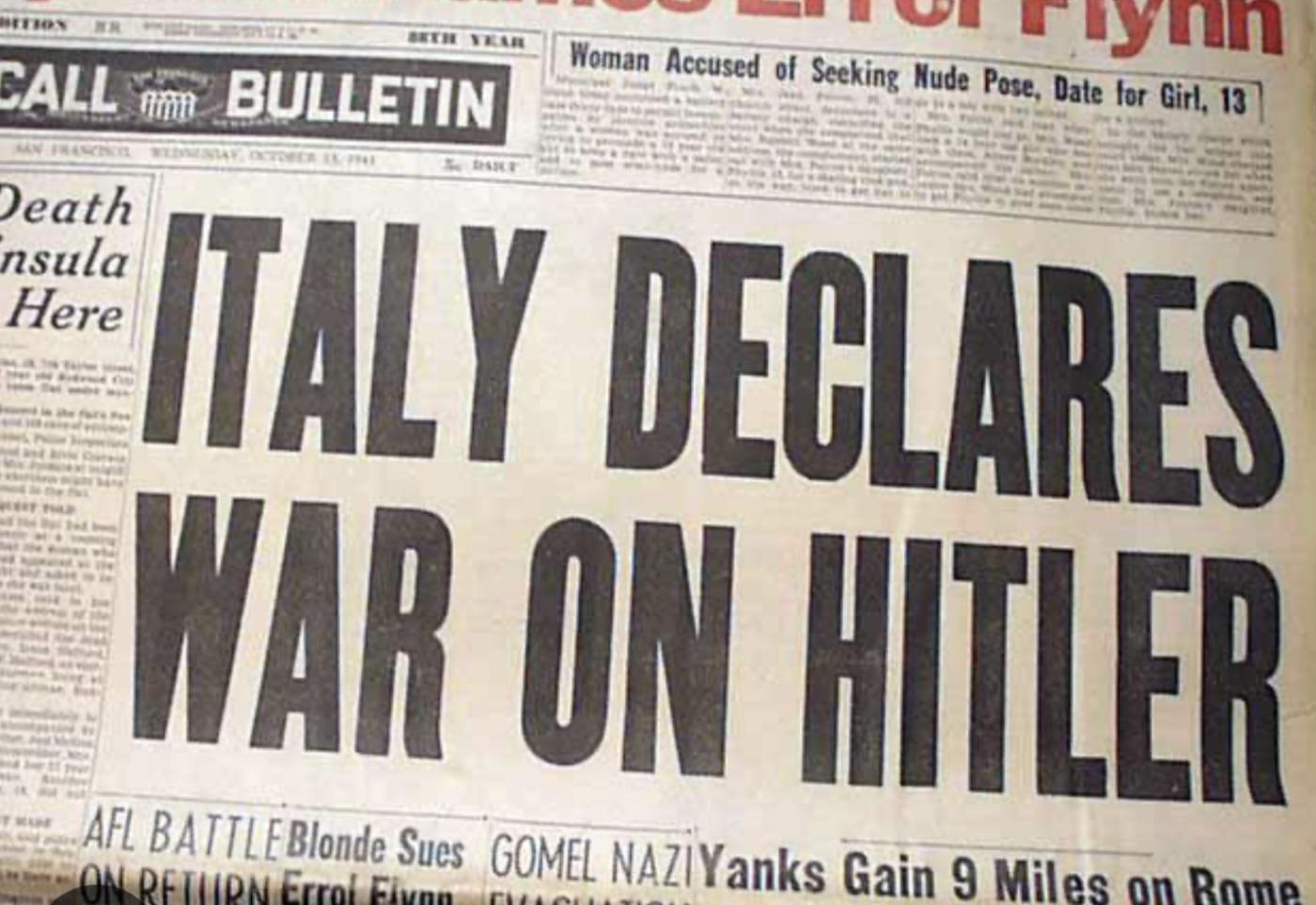
On this day in military history…
Italy’s role in World War II took a dramatic turn when it went from being a close ally of Nazi Germany to declaring war on its former partner and joining forces with the Allies. At the start of the war, Italy, led by Benito Mussolini, was part of the Axis Powers alongside Germany and Japan. Mussolini was determined to build a new Roman Empire and saw an alliance with Hitler as the best way to expand Italy’s influence. Italy officially aligned with Germany in the late 1930s and entered the war on the Axis side, participating in military campaigns in North Africa and the Balkans. However, Italy’s forces often faced setbacks and struggled against better-prepared enemies.
By 1943, the tide had turned against Italy. The Allied invasion of Sicily was a major blow, highlighting Italy’s vulnerable position. At home, dissatisfaction with Mussolini’s leadership grew, and the war’s toll was deeply felt by the Italian people and government alike. In July of that year, Mussolini was removed from power following a vote of no confidence by the Fascist Grand Council, and King Victor Emmanuel III ordered his arrest. Marshal Pietro Badoglio was then appointed Prime Minister, marking the end of the fascist regime.
With Mussolini out, Italy began secret negotiations with the Allies to seek peace and exit the war. An armistice was signed on September 3, 1943, and publicly announced on September 8, marking Italy’s surrender and effectively ending its alliance with Germany. However, this sudden switch led to chaos. Germany quickly occupied much of northern and central Italy, rescued Mussolini, and set up a puppet state to continue the fight on the Axis side. Meanwhile, the Italian government loyal to the king, now led by Badoglio, officially declared war on Germany on October 13, 1943. Italy then became a co-belligerent with the Allies, fighting against German forces on its own soil alongside British, American, and other Allied troops.
Several key figures shaped this dramatic shift. Mussolini’s fall was the catalyst, while King Victor Emmanuel III played a crucial role by supporting the removal of the dictator and backing the new government. Marshal Badoglio guided Italy through the delicate negotiations and ultimately made the decision to declare war on Germany. Allied leaders, such as General Dwight D. Eisenhower, welcomed Italy’s cooperation, which proved important in the Mediterranean campaign.
The declaration of war on Germany came about as a result of Italy’s military defeats, the internal political coup against Mussolini, and the urgent need to save the country from further destruction. Italy’s surrender to the Allies broke its alliance with Germany, which responded by occupying Italian territory. This occupation forced Italy’s new government to actively resist Germany, culminating in the formal declaration of war on October 13, 1943, and Italy’s full shift to the Allied side.
This change of allegiance was one of the most significant developments of World War II. It showed how quickly alliances could shift and how internal pressures, military realities, and leadership decisions could reshape the course of the conflict. Italy’s move helped the Allies gain a crucial foothold in Europe and contributed to the eventual defeat of the Axis Powers.

